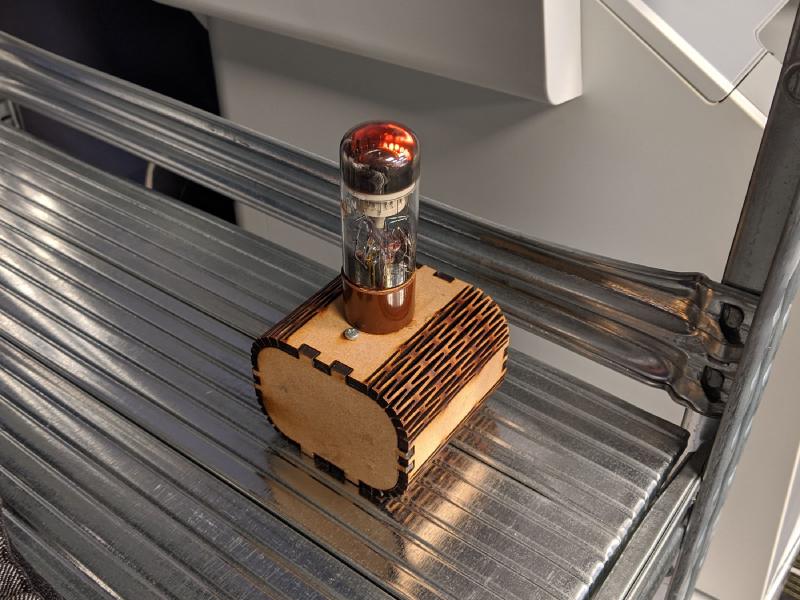Dekatrons are pulse counter tubes which were used in the 1950 and 1960s, before the well-known 74-series counter ICs. A dekatron, as the name suggests, has 10 different positions. These positions are kept by ionized gas. In this specific dekatron neon gas is used, which produces a nice orange glow. Since dekatrons were long replaced by the time the internet was created, the most popular dekatron project online is not very practical but looks very nice: a dekatron spinner.
This project uses the GC10/4B dekatron, which is a neon-filled glass tube. It has ten cathodes which make up the different positions. The cathodes are positioned around a central circular anode. A voltage difference of 400V between the anode and one of the cathodes causes the gas in between to ionize and produce a warm, orange glow.
Guide cathodes are positioned between the main ones. To cause the ionized “pointer” to jump to the next cathode, the guide cathode next to the active cathode is biased with a negative voltage. The same is done with the guide cathode next to the target cathode which causes the ionized gas ‘pointer’ to jump to the target cathode.
Animation from Threeneuron
In the animation above, K0 to K9 are the ten cathodes and G1 and G2 are the guide rails. When the guide rails are cycled with a slight phase shift, the pointer moves around the dekatron continuously. This is the basic operating principle of dekatron spinners.
Benadski drew up the following schematic. It shows how to construct a dekatron spinner from passive components.

Dekatron spinner schematic
A voltage multiplier is used to get the 400V for the anode, and two RC filters create two 40V AC signals with a relative phase shift to control the guide rails. If you want to play around with the circuit in simulation, here is a file you can open in Circuit JS.
Note: if you copy this circuit, take care to use components with appropriate voltage ratings and always be careful around mains voltage!
I soldered the schematic together on a small protoboard and laser-cut a box at the hackerspace. The result makes for a nice gift or conversation starter.

Finished dekatron spinner
